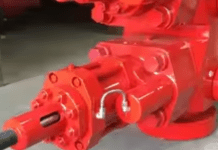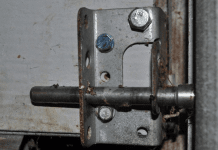Have you ever wondered what is vacuum casting process and how it works to create high-quality plastic parts with fine details and textures?
Vacuum casting is a versatile and cost-effective manufacturing process that has recently gained popularity, especially for small and medium-sized production runs. Using a vacuum to remove air from a mold can produce high-quality parts with fine details and smooth surfaces.
However, to maximize efficiency with vacuum casting, it’s essential to follow some tips and best practices that can improve your results and save time and resources. Explore some valuable techniques for getting the most out of vacuum casting below.
Tips For Effective Vacuum Casting
Use High-quality Molds
One of the most critical factors that influence the quality of vacuum cast parts is the quality of the mold. To produce accurate and consistent parts, it’s essential to use a mold that is precisely machined, smooth, and durable.
For small production runs, silicone or polyurethane molds are popular, as they are relatively inexpensive, easy to use, and can produce multiple parts.
However, you need to cast parts in large quantities. In that case, it’s better to use metal molds, such as aluminum or steel, which can withstand higher temperatures and pressures.
Optimize The Casting Material
The casting material used in vacuum casting can significantly impact the quality of the parts, as well as the overall efficiency of the process. Many different materials are available, including various types of resins, polymers, and elastomers, each with its own strengths and weaknesses.
To maximize efficiency, it’s essential to choose a material that is compatible with your mold, has the required properties, such as strength, flexibility, or heat resistance, and is easy to mix and pour. Additionally, additives or fillers can enhance the material’s properties or reduce shrinkage.
Fine-tune The Vacuum And Pressure Settings
The vacuum and pressure settings are critical parameters that affect the quality and consistency of the parts, as well as the cycle time and material consumption.
To maximize efficiency, it’s crucial to fine-tune these settings based on mold geometry, material viscosity, and other factors. For example, increasing the vacuum level can help remove more air and prevent bubbles. Still, it can also cause the material to expand or overfill the mold.
Similarly, adjusting the pressure can help compress the material and improve the detail reproduction. Still, it can also create undercuts or distortions.
Practice Proper Safety Measures
Vacuum casting can involve hazardous materials and equipment, such as solvents, catalysts, vacuum pumps, and high-temperature ovens.
To maximize efficiency and minimize risks, it’s essential to follow proper safety measures, such as wearing protective gear, working in a well-ventilated area, storing and handling the materials appropriately, and using calibrated equipment.
Additionally, it’s essential to train and supervise the personnel involved in the process and to have emergency procedures in place in case of accidents or malfunctions.
Continuously Monitor and Improve The Process
Finally, to maximize efficiency with vacuum casting, it’s crucial to continuously monitor and improve the process based on feedback and data.
By tracking key metrics such as cycle time, yield, scrap rate, and customer satisfaction, you can identify areas of improvement and implement corrective actions.
Additionally, you can create a standard operating procedure that ensures consistency and reproducibility by documenting the process parameters, such as mold preparation, material mixing, and curing time. Using statistical process control or other quality tools, you can also identify trends, patterns, or anomalies that may indicate process variations or defects.
Conclusion
In conclusion, vacuum casting is a powerful and flexible manufacturing process that can help you produce high-quality parts with minimal investment. Following these tips and best practices can maximize efficiency, reduce costs, and improve your production outcomes.








